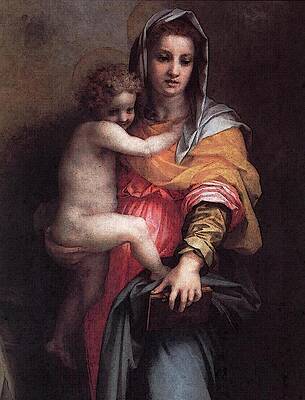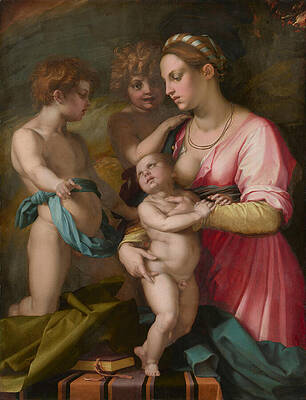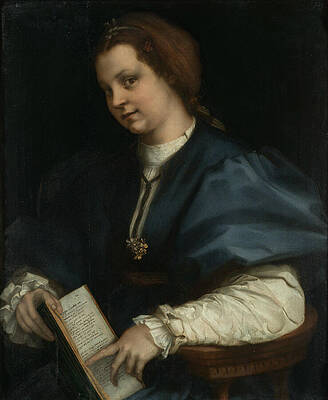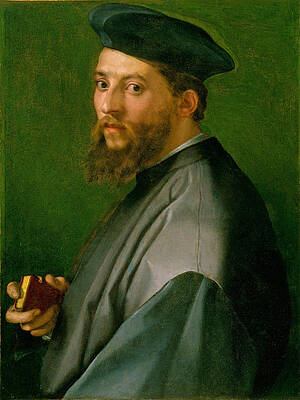Andrea del Sarto
Paintings
Madonna of the Harpies
Portrait of a Young Man
Charity
Portrait of a Woman
The Sacrifice of Isaac
Lady with a book of Petrarch's rhyme
Madonna della Scala. Virgin of the Stairs
The Madonna and Child Saint Elizabeth and the Baptist
Portrait of a Man
The Holy Family with the Young Saint John the Baptist

Archangel Raphael with Tobias, St. Lawrence and the Donor Leonardo di Lorenzo Morelli
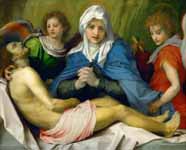

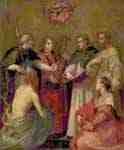
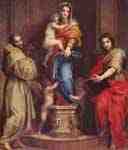
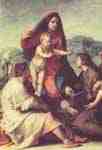
Madonna with Saints and an Angel
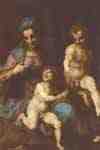

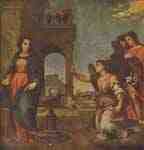
Drawings
Study for the Head of Julius Caesar
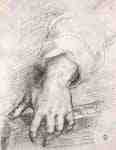
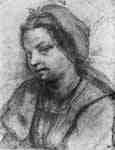
Fine Art Prints | Greeting Cards | Phone Cases | Lifestyle | Face Masks | Men's , Women' Apparel | Home Decor | jigsaw puzzles | Notebooks | Tapestries | ...
Andrea del Sarto (Italian: [anˈdrɛːa del ˈsarto]; 1486–1530) was an Italian painter from Florence, whose career flourished during the High Renaissance and early Mannerism. Though highly regarded during his lifetime as an artist senza errori ("without errors"), his renown was eclipsed after his death by that of his contemporaries, Leonardo da Vinci, Michelangelo, and Raphael.
Early life and training
The house of Andrea del Sarto
Andrea was born Andrea d'Agnolo di Francesco di Luca di Paolo del Migliore in Florence on 16 July 1486. Since his father, Agnolo, was a tailor (sarto), he became known as "del Sarto" ("tailor's son").[1] Since 1677 some have attributed the surname Vannucchi with little documentation. By 1494 Andrea was apprenticed to a goldsmith, and then to a woodcarver and painter named Gian Barile, with whom he remained until 1498. According to Vasari, he then apprenticed to Piero di Cosimo, and later with Raffaellino del Garbo (Carli).
Andrea and an older friend Franciabigio decided to open a joint studio at a lodging together in the Piazza del Grano. The first product of their partnership may have been the Baptism of Christ for the Florentine Compagnia dello Scalzo, the beginning of a monochrome fresco series. By the time the partnership was dissolved, Sarto's style bore the stamp of individuality. It "is marked throughout his career by an interest, exceptional among Florentines, in effects of colour and atmosphere and by sophisticated informality and natural expression of emotion."[2]
Frescoes at SS Annunziata in Florence
From 1509 to 1514 the brotherhood of the Servites employed Sarto, Franciabigio, and Andrea Feltrini in a programme of frescoes at Basilica della Santissima Annunziata di Firenze.[3] Sarto completed three frescoes in the portico of the Servite convent illustrating the Life of Filippo Benizzi,[4] a Servite saint who died in 1285. He executed them rapidly, depicting the saint sharing his cloak with a leper, cursing some gamblers, and restoring a girl possessed with a devil. These paintings met with respect, the correctness of the contours being particularly admired, and earned for Sarto the nickname of "Andrea senza errori" (Andrea the perfect). After these, the painter depicted in two frescoes the death of S. Filippo and then children cured by touching his garment; all five works were completed before the close of 1510. The Servites engaged him to do two more frescoes in the forecourt of the Annunziata: a Procession of the Magi (or Adoration, containing a self-portrait) finished in 1511. Towards 1512 he painted an Annunciation in the monastery of S. Gallo and a Marriage of Saint Catherine (Dresden).
By 1514 Andrea had finished his last two frescoes, including his masterpiece, the Birth of the Virgin, which fuses the influence of Leonardo, Ghirlandaio and Fra Bartolomeo.[5] By November 1515 he had finished at the Scalzo the Allegory of Justice and the Baptist preaching in the desert, followed in 1517 by John Baptizing, and other subjects.
Visit to France
Del Sarto's most ambitious monument, in terms of the amount of time he devoted to it, is the grisaille series in the Chiostro dello Scalzo.
Before the end of 1516 a Pietà of his composition, and afterwards a Madonna, were sent to the French Court. This led to an invitation from François I, in 1518, and he journeyed to Paris in June of that year, along with his pupil Andrea Squarzzella, leaving his wife, Lucrezia, in Florence.
According to Giorgio Vasari, Andrea's pupil and biographer,[6] Lucrezia wrote to Andrea and demanded he return to Italy. The King assented, but only on the understanding that his absence from France was to be short. He then entrusted Andrea with a sum of money to be expended in purchasing works of art for the French Court. By Vasari's account, Andrea took the money and used it to buy himself a house in Florence, thus ruining his reputation and preventing him from ever returning to France. The story inspired Robert Browning's poem-monologue "Andrea del Sarto Called the 'Faultless Painter'" (1855),[7] but is now believed by some historians to be apocryphal.[8]
Later works in Florence
In 1520 he resumed work in Florence, and executed the Faith and Charity in the cloister of the Scalzo. These were succeeded by the Dance of the Daughter of Herodias, the Beheading of the Baptist, the Presentation of his head to Herod, an allegory of Hope, the "Apparition of the Angel to Zacharias" (1523), and the monochrome Visitation. This last was painted in the autumn of 1524, after Andrea had returned from Luco in Mugello, whence an outbreak of bubonic plague in Florence had driven him and his family. In 1525 he returned to paint in the Annunziata cloister the Madonna del Sacco, a lunette named after a sack against which Joseph is represented propped. In this painting the generous virgin's gown and her gaze indicate his influence on the early style of pupil Pontormo.
In 1523 Andrea painted a copy of the portrait group of Pope Leo X by Raphael. (Andrea's copy is now in the Naples Museum, while the original remains at the Pitti.) The Raphael painting was owned by Ottaviano de' Medici, and requested by Federico II Gonzaga, Duke of Mantua. Unwilling to part with the original, Ottaviano retained Andrea to produce a copy, which he passed to the Duke as the original. So faithful was the imitation that even Giulio Romano, who had himself manipulated the original to some extent, was completely fooled; and, on showing the copy years afterwards to Vasari, who knew the truth, he could only be convinced that it was not genuine when a private mark on the canvas was pointed out to him by Vasari.
Andrea's final work at the Scalzo was the Birth of the Baptist (1526). In the following year he completed his last important painting, a celebrated Last Supper at San Salvi, (now an inner suburb of Florence), in which all the personages appear to be portraits.
A number of his paintings were considered to be self-portraits. A Portrait of a Young Man in the National Gallery, London was formerly believed to be a self-portrait,[9] as was the Portrait of Becuccio Bicchieraio in National Gallery of Scotland,[10] but both are now known not to be. There is a self-portrait at Alnwick Castle, a young man about twenty years, with his elbow on a table. Another youthful portrait is in the Uffizi Gallery, and the Pitti Palace contains more than one.
Madonna of the Harpies
The Madonna of the Harpies was Andrea's major contribution to High Renaissance art.
Perhaps the best known painting by Andrea del Sarto is the Madonna of the Harpies, a depiction of the Virgin and child on a pedestal, flanked by two saints (Bonaventure or Francis, and John the Evangelist), and at her feet two cherubs. The pedestal is decorated with a relief depicting some feminine figures interpreted as harpies and thus gave rise, in English, to the name of the painting. Originally completed in 1517 for the convent of San Francesco dei Macci, the altarpiece now resides in the Uffizi. In an Italy swamped with a tsunami of Madonnas, it would be easy to overlook this work; however, this commonly copied scheme also lends itself to comparison of his style with that of his contemporaries. The figures have a Leonardo-like aura, and the stable pyramid of their composition provides a unified structure. In some ways, his rigid adherence is more classical than Leonardo da Vinci's but less so than Fra Bartolomeo's representations of the Holy Family, but there is an elegance that is lacking in the more sculptural paintings of other contemporaries.
Andrea del Sarto - Pietà with Saints
Personal life
Andrea married Lucrezia (del Fede), widow of a hatter named Carlo, of Recanati, on 26 December 1512. Lucrezia appears in many of his paintings, often as a Madonna. However, Vasari describes her as "faithless, jealous, and vixenish with the apprentices."[6] She is similarly characterized in Robert Browning's poem.
Andrea died in Florence at age 43 during an outbreak of Bubonic Plague in either 1530 or 1531. He was buried unceremoniously in the church of the Servites. In Lives of the Artists, Vasari claimed Andrea received no attention at all from his wife during his terminal illness.[6] However, it was well-known at the time that plague was highly contagious, so it has been speculated that Lucrezia was simply afraid to contract the virulent and frequently-fatal disease. If true, this well-founded caution was rewarded, as she survived her husband by 40 years.[1]
Critical assessment and legacy
It was Michelangelo who had introduced Vasari in 1524 to Andrea's studio. He is said to have thought very highly of Andrea's talents. Of those who initially followed his style in Florence, the most prominent would have been Jacopo Pontormo, but also Francesco Salviati and Jacopino del Conte. Other lesser known assistants and pupils include Bernardo del Buda, Lamberto Lombardi, Nannuccio Fiorentino, and Andrea Squazzella[11]
Vasari, however, was highly critical of his teacher, alleging that, though having all the prerequisites of a great artist, he lacked ambition and that divine fire of inspiration which animated the works of his more famous contemporaries, like Leonardo, Michelangelo, and Raphael.
Partial anthology of works
Portrait of a Man, Metropolitan Museum of Art
Holy Family with St Peter Martyr (1507-8, Pinacoteca Bari)
Madonna and Child with St. John (c.1513, Whitfield Fine Art)
Madonna of the Harpies (Virgin and Child, with St Francis, St John the Evangelist, and two angels), (painted S. Francesco, now in Uffizi, Florence)
Fathers disputing on the doctrine of the Trinity (Saints Augustine, Lawrence, Dominic, Francis and Saints Sebastian and Mary Magdalene)-1517, altarpiece for the monastery of S. Gallo, now in Ufizzi, Florence
Charity (Louvre)
Pieta (Belvedere, Vienna)
Julius Caesar receives tribute (fresco at Poggio a Caiano, 1521) completed by Alessandro Allori.
Virgin surrounded by Saints (Pitti Palace, Florence) [12]
Pieta (Pitti Palace)
Virgin, Child, Joseph, Elizabeth, John the Baptist, and an Archangel (Prado)
Holy Family with John the Baptist (Louvre)
In Berlin a portrait of his wife.
At Panshanger, Berkshire, a fine portrait named "Laura."
Annunciation (Pitti Palace)[13]
Portrait of a Young Man, National Gallery, London
Notes
Cole, Thomas B. Andrea del Sarto fingers. Journal of the American Medical Association, August 25, 2010, Vol. 304, No. 8, p. 833.
"Encyclopædia Britannica". Britannica.com. Retrieved 2012-09-24.
"mega.it". mega.it. Retrieved 2012-09-24.
[1][dead link]
"Compare it to Ghirlandaio's Quattrocento treatment". Wga.hu. Retrieved 2012-09-24.
Vasari, Giorgio. The Lives of the Artists. Oxford University Press, USA; Reissue edition (December 15, 2008). ISBN 0-19-953719-4
"Stonehill". Faculty.stonehill.edu. Retrieved 2012-09-24.
University of Toronto Library[dead link]
"National Gallery website". Nationalgallery.org.uk. Retrieved 2012-09-24.
National Gallery of Scotland website[dead link]
J.R. Hobbes p. 258-9.
"Welcome to". Nelepets.com. Retrieved 2012-09-24.
[2][dead link]
References
Public Domain This article incorporates text from a publication now in the public domain: Chisholm, Hugh, ed. (1911). Encyclopædia Britannica (11th ed.). Cambridge University Press.
Freedberg, Sydney J. (1993). Pelican History of Art, ed. Painting in Italy, 1500-1600. pp. 90–95 Penguin Books Ltd.
Hobbes, James R. (1849). Picture collector's manual; Dictionary of Painters. T. & W. Boone, 29 Bond Street, London; Digitized by Googlebooks (2006) from Oxford library.
----
Fine Art Prints | Greeting Cards | Phone Cases | Lifestyle | Face Masks | Men's , Women' Apparel | Home Decor | jigsaw puzzles | Notebooks | Tapestries | ...
----
Artist
A - B - C - D - E - F - G - H - I - J - K - L - M -
N - O - P - Q - R - S - T - U - V - W - X - Y - Z
Retrieved from "http://en.wikipedia.org/"
All text is available under the terms of the GNU Free Documentation License


